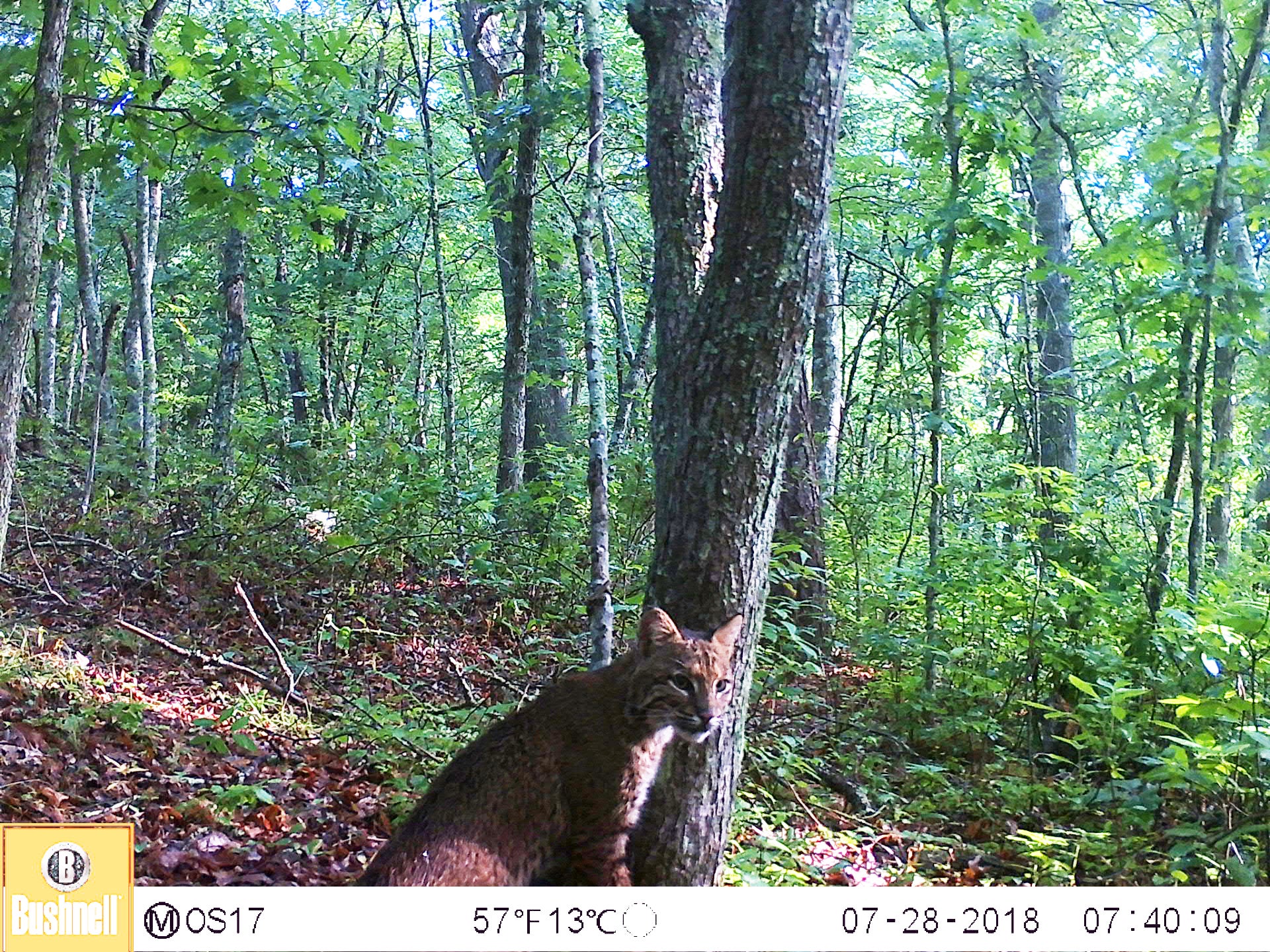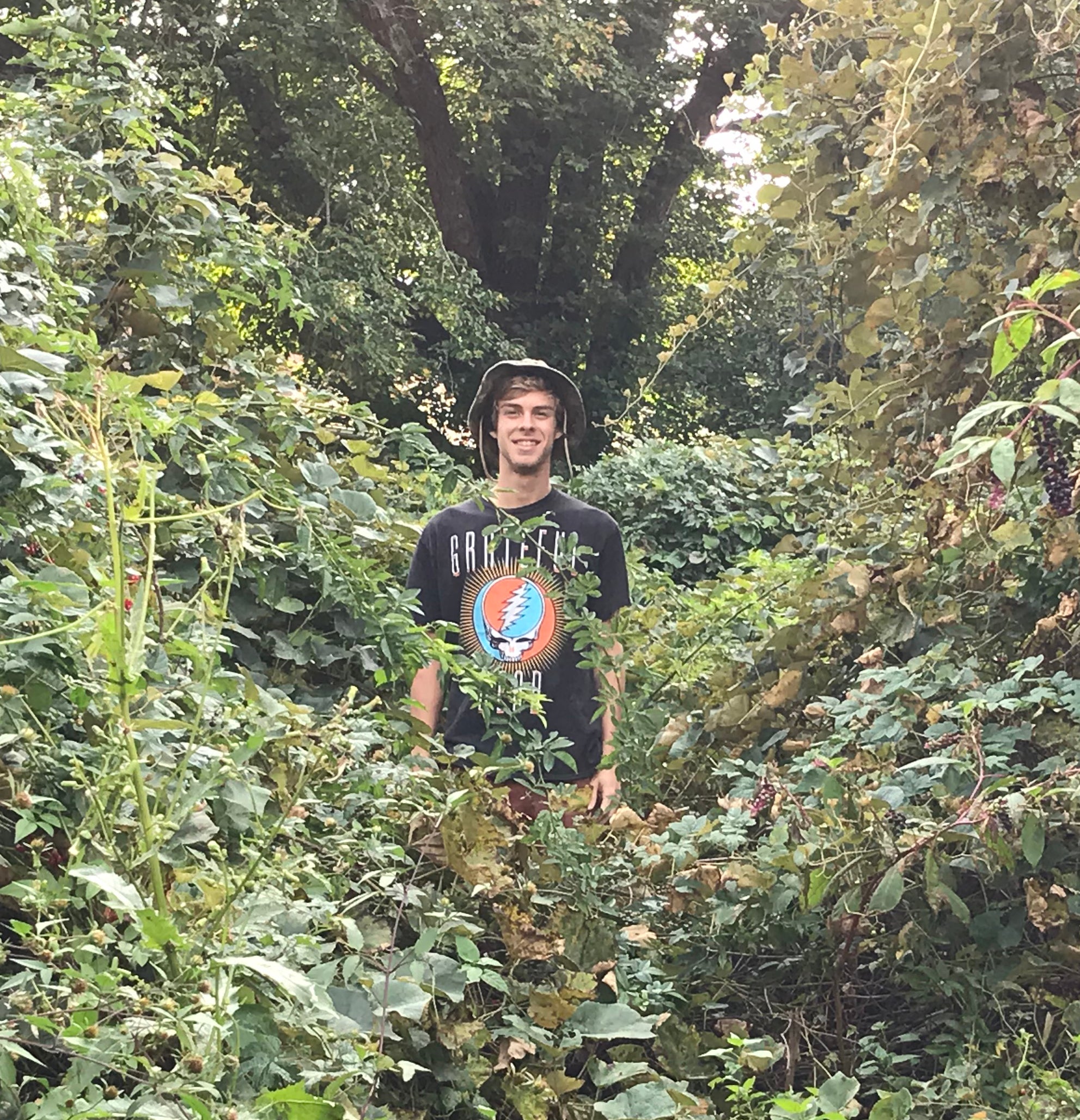KINGSTON, R.I. – October 4, 2018 – When University of Rhode Island senior Ian O’Hara got his first look at a wild bobcat during a summer research project, the animal was much more attractive than he imagined.
“I thought it was going to be all matted and gnarly, but it was beautiful, well-groomed and with an amazing pattern on its fur,” he said. “It’s likeness to a domestic cat was unbelievable, but larger.”
The bobcat had been captured as part of what O’Hara called “an occupancy study” to learn about the distribution of bobcats in Rhode Island, how widely they travel, how they use their territory, and how many reside in the state.
O’Hara’s role was to conduct a trail camera survey to capture photos of bobcats throughout the region. He placed 50 motion-activated cameras at random locations on public land, applied a scent lure – which he described as smelling like “having a dead skunk in the passenger seat of your car” – to a nearby tree, and recorded information in a database about every animal that passed by the cameras.

Most of the hundreds of images were of deer and coyotes, but the cameras also captured pictures of fishers, foxes, raccoons and other animals. His favorite was of an adult coyote with five young pups. Bobcats were few and far between.
“We detected bobcats on seven of the cameras,” said O’Hara, who lives in Cranston. “They’re very elusive and very smart, which makes them hard to track. It seems like they have large territories, so they’re pretty spread out, though it’s hard to tell. Maybe they’re just camera shy.
“It’s great that they’re here, though,” he added. “Bobcats are a native Rhode Island species that were hunted and trapped and pushed out by development, so they weren’t very prominent in the area. But now that we have conservation laws in place, they’re starting to come back. And that’s a good thing.”
The research project was O’Hara’s first experience conducting field research, and he said it was the perfect project for him. He grew up hiking and camping, so he loves the outdoors.
“I hiked about five kilometers each day three or four times per week, and it was great to be in the woods and be active,” he said. “Some of the sites were in pretty rough places to get to. I had to bushwhack through bushes, climb over rocks and go through poison ivy. But I loved it.”
O’Hara’s research was part of a multi-year study of bobcats led by URI researcher Amy Mayer. His work was supported by the URI Coastal Fellows program, a unique initiative designed to involve undergraduate students in addressing current environmental problems. Now in its 22nd year, it is based at URI’s College of the Environment and Life Sciences. Students are paired with a mentor and research staff to help them gain skills relevant to their academic major and future occupations.
With just one year left in his undergraduate education, O’Hara is already looking toward graduate school to continue his studies in environmental science.
“Grad school is a means to an end,” he said. “I hope to eventually find myself working in the field, maybe doing habitat management, making sure the whole ecosystem is doing what it’s supposed to be doing. Whether it’s for a government agency or an environmental group or as a consultant, I don’t know. I’m open to all the possibilities.”

